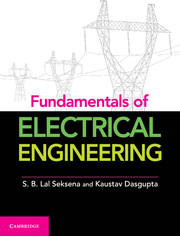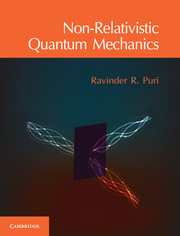Refine search
Actions for selected content:
37953 results in Cambridge Textbooks
Contents
-
- Book:
- Financial Data Science
- Published online:
- 17 December 2025
- Print publication:
- 17 July 2025, pp vii-xii
-
- Chapter
- Export citation
6 - Linear regression models
-
- Book:
- Financial Data Science
- Published online:
- 17 December 2025
- Print publication:
- 17 July 2025, pp 131-164
-
- Chapter
- Export citation
13 - Financial networks
-
- Book:
- Financial Data Science
- Published online:
- 17 December 2025
- Print publication:
- 17 July 2025, pp 337-370
-
- Chapter
- Export citation
2 - Data representation and visualization
-
- Book:
- Financial Data Science
- Published online:
- 17 December 2025
- Print publication:
- 17 July 2025, pp 7-30
-
- Chapter
- Export citation
Reviews
-
- Book:
- Financial Data Science
- Published online:
- 17 December 2025
- Print publication:
- 17 July 2025, pp ii-ii
-
- Chapter
- Export citation
4 - Principal component analysis and low-rank approximation
-
- Book:
- Financial Data Science
- Published online:
- 17 December 2025
- Print publication:
- 17 July 2025, pp 81-110
-
- Chapter
- Export citation
8 - Nonlinear classifiers and kernel methods
-
- Book:
- Financial Data Science
- Published online:
- 17 December 2025
- Print publication:
- 17 July 2025, pp 193-214
-
- Chapter
- Export citation
10 - Optimization tools
-
- Book:
- Financial Data Science
- Published online:
- 17 December 2025
- Print publication:
- 17 July 2025, pp 245-272
-
- Chapter
- Export citation
11 - Mean/variance portfolio optimization
-
- Book:
- Financial Data Science
- Published online:
- 17 December 2025
- Print publication:
- 17 July 2025, pp 273-310
-
- Chapter
- Export citation
1 - Preface
-
- Book:
- Financial Data Science
- Published online:
- 17 December 2025
- Print publication:
- 17 July 2025, pp 1-6
-
- Chapter
- Export citation
Index
-
- Book:
- Financial Data Science
- Published online:
- 17 December 2025
- Print publication:
- 17 July 2025, pp 397-400
-
- Chapter
- Export citation
Dedication
-
- Book:
- Financial Data Science
- Published online:
- 17 December 2025
- Print publication:
- 17 July 2025, pp v-vi
-
- Chapter
- Export citation
9 - Neural networks and deep learning
-
- Book:
- Financial Data Science
- Published online:
- 17 December 2025
- Print publication:
- 17 July 2025, pp 215-244
-
- Chapter
- Export citation
7 - Linear classifiers
-
- Book:
- Financial Data Science
- Published online:
- 17 December 2025
- Print publication:
- 17 July 2025, pp 165-192
-
- Chapter
- Export citation
Copyright page
-
- Book:
- Financial Data Science
- Published online:
- 17 December 2025
- Print publication:
- 17 July 2025, pp iv-iv
-
- Chapter
- Export citation

Fundamentals of Electrical Engineering
-
- Published online:
- 16 July 2025
- Print publication:
- 10 November 2016
-
- Textbook
- Export citation

Non-Relativistic Quantum Mechanics
-
- Published online:
- 16 July 2025
- Print publication:
- 17 April 2017
-
- Textbook
- Export citation

Economics for a Sustainable World
- An Introduction to Natural Resource and Environmental Economics
-
- Published online:
- 14 July 2025
- Print publication:
- 12 June 2025
-
- Textbook
- Export citation
Appendix
-
- Book:
- English Phonetics and Phonology
- Published online:
- 17 October 2025
- Print publication:
- 10 July 2025, pp 197-206
-
- Chapter
- Export citation
Chapter 12 - Speech Rhythm
-
- Book:
- English Phonetics and Phonology
- Published online:
- 17 October 2025
- Print publication:
- 10 July 2025, pp 161-171
-
- Chapter
- Export citation
